Paris’ Golden Period
John Dilworth examines two great 19th century Parisian violins by Nicolas Lupot and Auguste Sébastien Phillippe Bernardel
By 1810, when this violin was made, Nicolas Lupot was already recognised as the leading violin maker in Paris, and Paris was set to become the new epicentre of the craft in Europe. His collaboration with the Abbé Sibire in 1806 had produced ‘La Chélonomie’, one of the first published books on the history of the violin and its making. Three years later he had gained an appointment to the Royal and Imperial Chapel, followed by further court appointments to both Emperor and King, a career made and spent in raucous times, under three very different régimes.
He arrived at this celebrity after training with his father François in Orléans, although he was born in Stuttgart in 1758. The family, like many French luthiers, came from Mirecourt stock and practiced in that workmanlike style. From 1792 Nicolas began to supply instruments to the then dominant figure in Paris, François Pique, and in 1796, under the post-revolution Directoire government, established himself in his own workshop in Paris in rue de Grammont. In 1806, at the height of the Napoleonic era, Lupot moved to the rue Croix des Petits Champs, very close to Pique, who retired in 1816. The last nine years of Lupots’ life were spent under the restored monarchy, and his legacy after his death in 1824 was a new school of lutherie in Paris, based firmly on the principles of Stradivari. His hallmark, readily distinguishable in this violin, is his fine craftsmanship, a control of technique and tool-handling that became the defining feature of the Paris school in the nineteenth century. It represents a dedication that survived three decades of the most intense social and political upheaval.
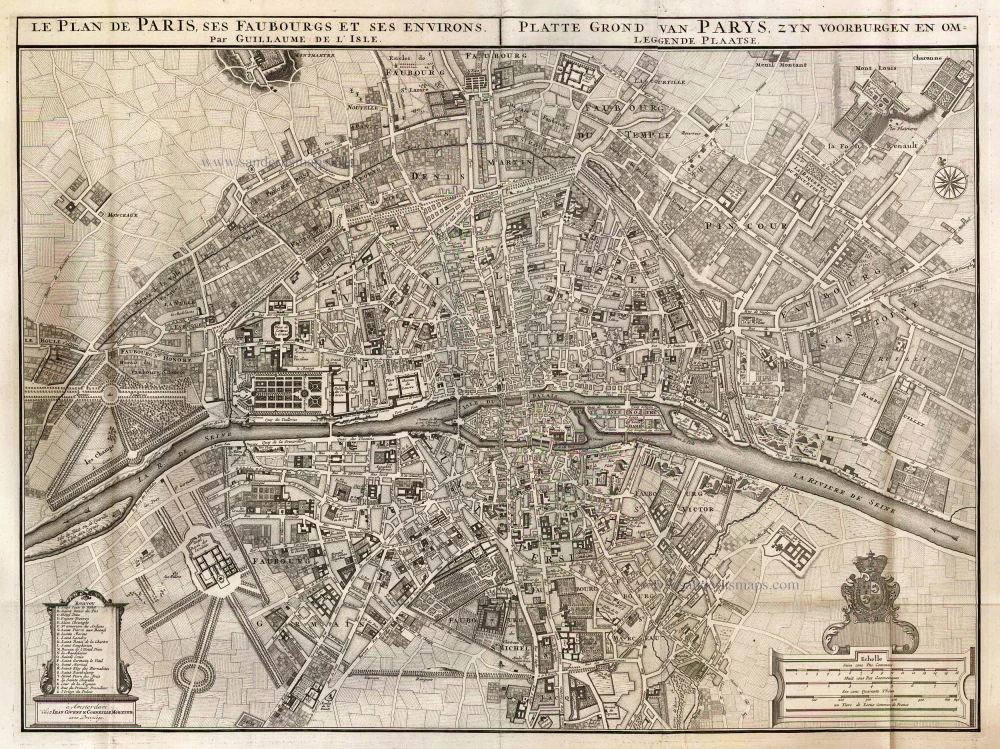

Lupot was well-acquainted with Stradivari’s work. In the year this violin was made, 1810, he sold a Stradivari of 1694 to the virtuoso Pierre Baillot, who owned at least two other notable Strads as well a violin made for him by Lupot in 1799. Yet this 1810 instrument, like other examples of his work, is by no means a close copy of a particular Stradivari. Although he followed many detailed features which are visible in this violin, such as the pins in the upper and lower back bisected by the purfling, and the carefully morticed willow blocks and linings, there are aspects of originality that Lupot seems to have introduced as representative of a distinct and recognisable style of his own, as laid out in the analytical approach he described to Sibire in ‘La Chélonomie’. The most striking aspect of his design is the wide and upright setting of the soundholes and the emphatic fluting of the wings, which extends into the upper half of the ‘F’. The purfling is of ebony, and the mitres are strongly deflected across the corner, exaggerating Stradivari’s own style. He preferred to use a one-piece back, as here, with large dimensions faithfully matching Stradivari’s ‘G’ form. The scroll itself is a skilful interpretation of the ‘Golden Period’, with the chamfers blackened in the appropriate manner (as are the rib corners), but there is a strong scribe line along the centre, and the chin has a slight angularity to it, the semicircle of the chin meeting the pegbox a little abruptly. Lupot also described his varnish to the Abbé in terms of a pigmented oil process, and here the colour achieved is a characteristic deep red-brown laid close to a golden ground, and almost certainly shaded in imitation of an aged finish.
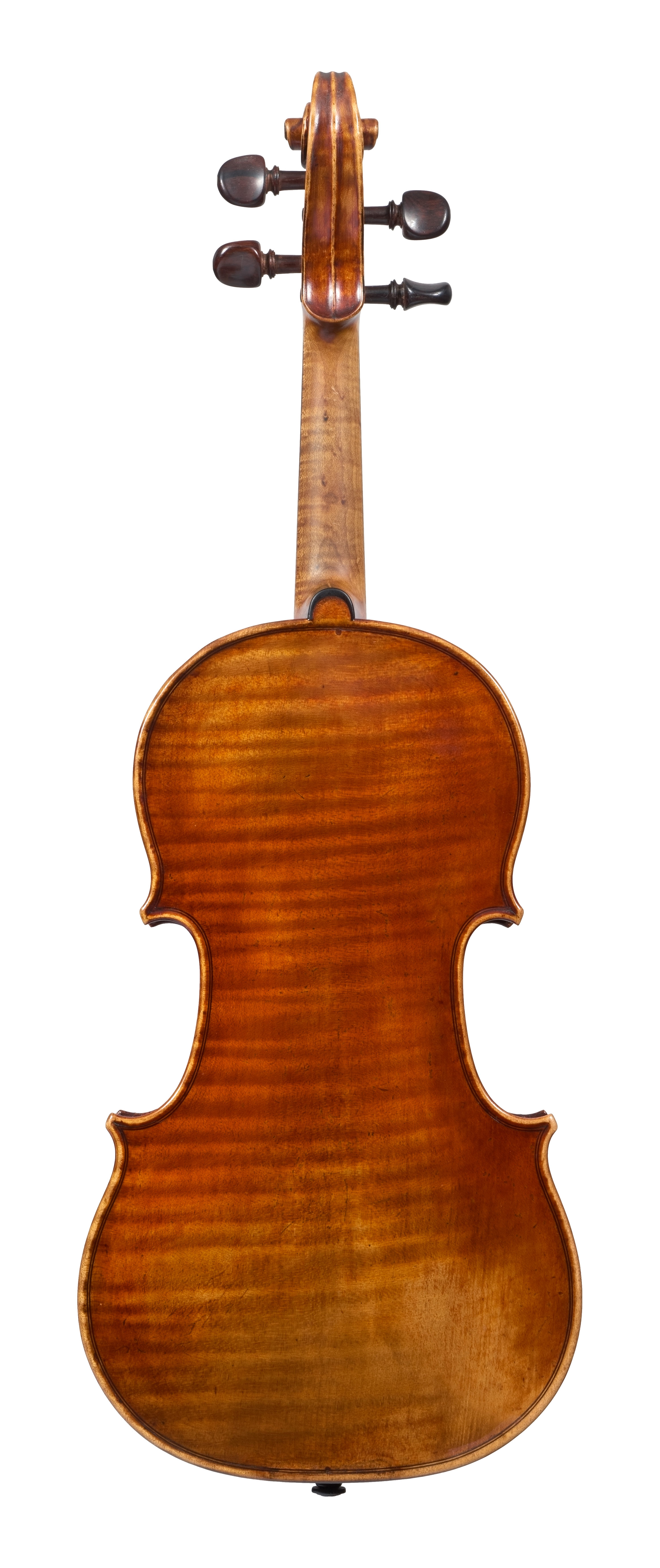
The scroll itself is a skilful interpretation of the ‘Golden Period’, with the chamfers blackened in the appropriate manner.
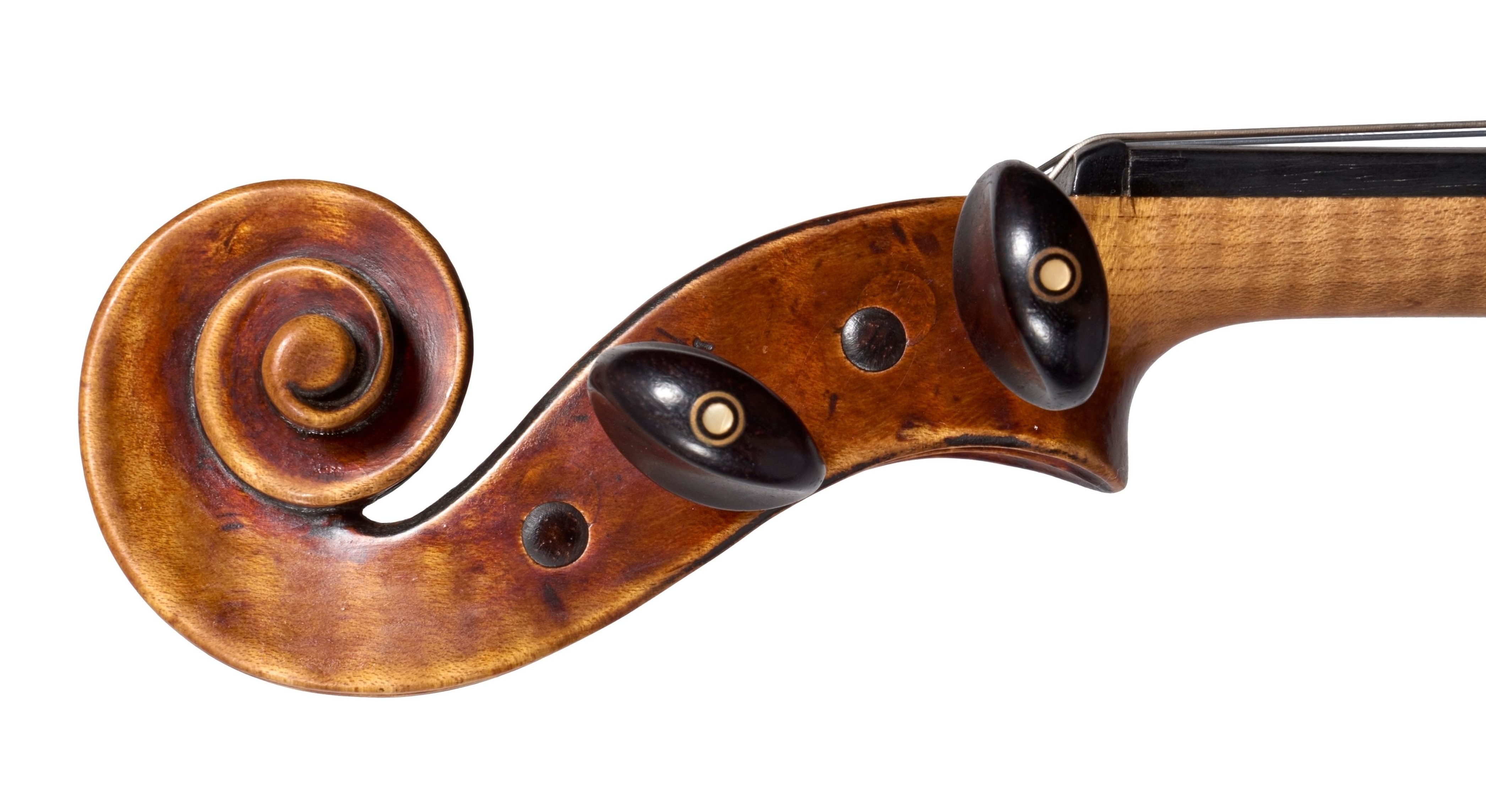
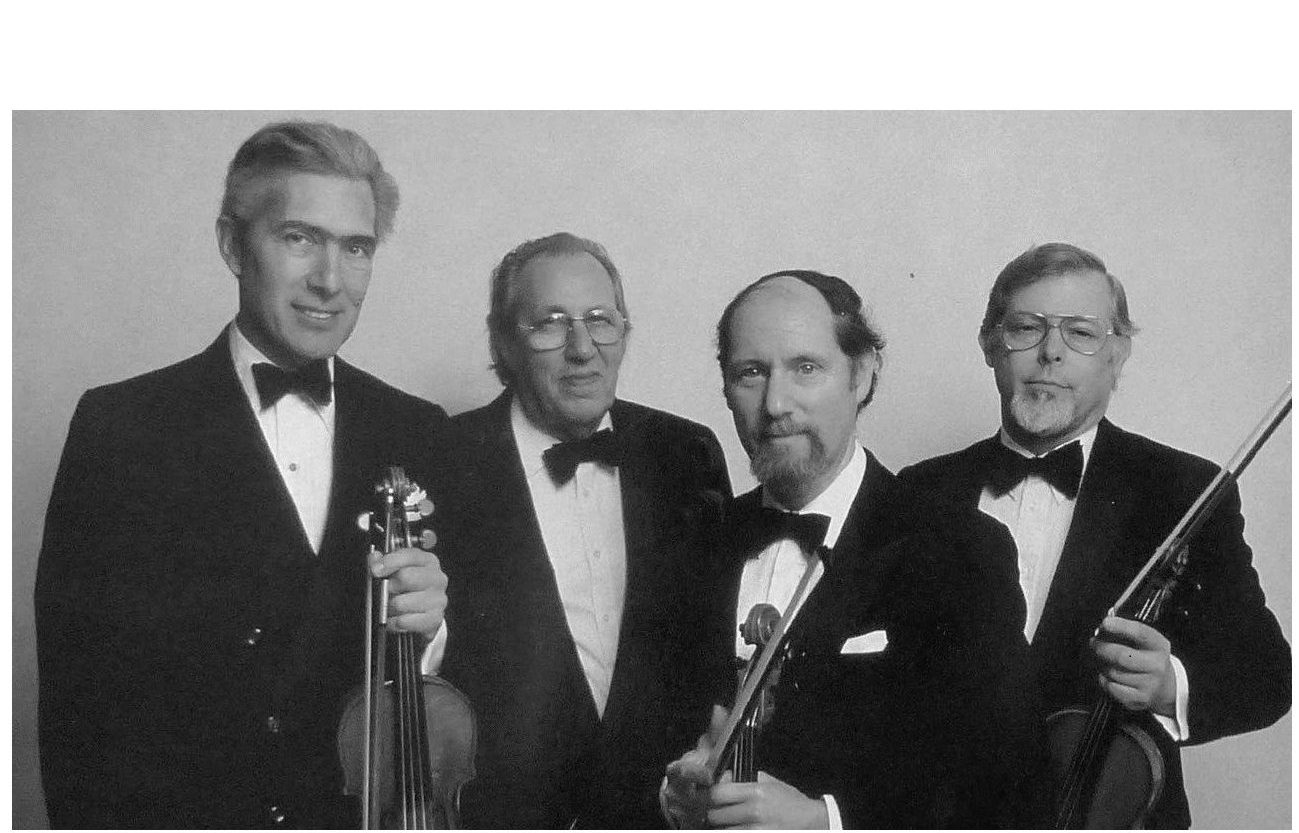

Lupot’s work is therefore relatively easily characterised, but his mannerisms are shared to a greater or lesser extent by the assistants he trained, notably Charles François Gand and Auguste Sébastien Phillippe Bernardel, whose families later combined to found one of the most influential Parisian ateliers of the later nineteenth century. This Bernardel violin of 1832 proudly declares on its label that the maker is a pupil of Lupot, working at no.23 rue Croix des Petits Champs (very close to his late master’s shop at no.30, which was briefly occupied by J.B.Vuillaume from 1825). Auguste is known as ‘Bernardel père’, and like Lupot, had a family background in Mirecourt. He joined Lupot in about 1815, working briefly there with Gand, before opening his own establishment in the rue Coquillière in 1826, two years after Lupot’s death. His move back to the rue Croix des Petits Champs came a few years later, J.B. Vuillaume having by then moved on to no.46 in the same street in 1828. Bernardel and Vuillaume are often seen as the great rivals of the age, and are indeed very close contemporaries. The extent of Vuillaume’s ambition and versatility has overtaken Bernardel’s reputation, but Bernardel’s expertise and skill absolutely survive the comparison.
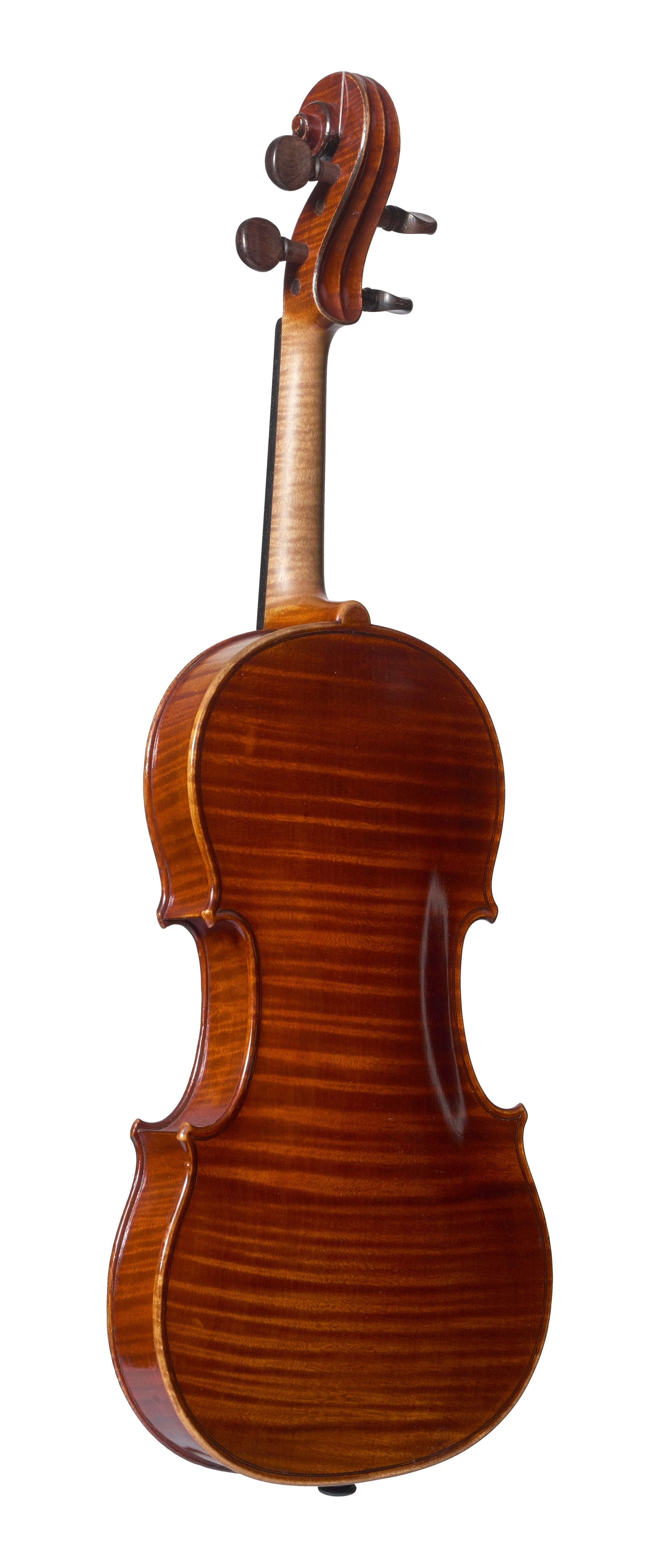
The choice is of a single piece of maple for the back, handsomely marked with a deep flame.
This violin is in excellent condition and displays the maker’s hand clearly. Like his master’s work, it is based on a Golden Period Stradivari model, but adapted to even larger dimensions, expanded by 2mm in length and widths. Again, the choice is of a single piece of maple for the back, handsomely marked with a deep flame. He also employed ebony for the purfling, but the mitres are less flamboyant, and actually, more Stradivarian in style. In general effect, the whole instrument is closer to the Stradivari model, and lacks some of the affectations of the Lupot. The immaculate varnish, of a consistent and deep red that often characterisies his work, has not been shaded or artificially aged, although Bernardel, along with Vuillaume, took such techniques to new levels. Internally, he departs from both Stradivari and Lupot in using pine for the morticed blocks and linings, which are noticeably larger than Lupot’s. The small pins are still present in the back plate, but split by the purfling and visible on either side of the inlay. On the front, the widely set soundholes are certainly an inheritance from Lupot, but the fluting of the slightly flared lower wing is more modest and carefully resolved into the arching. The scroll is an unerring reproduction of the Stradivari model, but shows no sign of the various layout marks seen in the Lupot. The black highlight of the chamfer is not carried on to the rib joins, as on the Lupot violin.



Bernardel went on to make exact reproductions of specific Stradivari instruments, and also imitations of del Gesù, whose importance was beginning to be recognised in the 1840s. His precise work and careful observation, coming from extensive dealings with the finest instruments in the Paris trade, made him a worthy successor to Lupot, and a fine upholder of the defining tradition of the city, of craftsmanship at the highest level, informed by careful study of the greatest masters.
Click here to view other instruments by Nicolas Lupot which we have sold, and here to view other instruments by ASP Bernardel
Recent Posts
Categories
- Feature Type
- Instrument Type
-
Maker
- Albani, Mathias (2)
- Amati, Andrea (8)
- Amati, Antonio & Girolamo (6)
- Amati, Girolamo II (6)
- Amati, Nicolò (6)
- Balestrieri, Tommaso (3)
- Banks, Benjamin (1)
- Bazin, Charles Nicolas (1)
- Bergonzi Family (1)
- Bergonzi, Carlo (2)
- Bergonzi, Michele Angelo (2)
- Bernardel, Auguste Sébastien Philippe (2)
- Bisiach, Leandro (2)
- Bultitude, Arthur Richard (1)
- Bussetto, Giovanni Maria del (1)
- Camilli, Camillo (2)
- Cappa, Gioffredo (2)
- Carcassi, Lorenzo & Tomaso (1)
- Ceruti, Giovanni Battista (3)
- Chanot, George Adolph (1)
- Cuypers, Johannes Theodorus (1)
- Dalla Costa, Pietro Antonio (1)
- Deconet, Michele (1)
- Fendt, Bernard Simon II (1)
- Fendt, Bernhard Simon I (1)
- Gabrielli, Giovanni Battista (1)
- Gagliano, Alessandro (2)
- Gagliano, Ferdinando (1)
- Genova, Giovanni Battista (1)
- Gisalberti, Andrea (1)
- Goffriller, Francesco (1)
- Goffriller, Matteo (1)
- Grancino, Giovanni (4)
- Grancino, Giovanni Battista II (1)
- Guadagnini, Gaetano II (1)
- Guadagnini, Giovanni Battista (7)
- Guarneri 'filius Andreæ', Giuseppe (3)
- Guarneri del Gesù, Giuseppe (5)
- Guarneri of Mantua, Pietro Giovanni (2)
- Guarneri of Venice, Pietro (3)
- Guarneri, Andrea (3)
- Götz, Conrad (1)
- Hill & Sons, W.E. (1)
- Kennedy, Thomas (1)
- Knopf, Carl Heinrich (1)
- Landolfi, Carlo Ferdinando (1)
- Lott, John Frederick (1)
- Lupot, Nicolas (2)
- Mantegazza, Pietro Giovanni (2)
- Mariani, Antonio (1)
- Montagnana, Domenico (2)
- Panormo, Vincenzo Trusiano (1)
- Parker, Daniel (1)
- Peccatte, Dominique (1)
- Platner, Michele (1)
- Pressenda, Giovanni Francesco (1)
- Rayman, Jacob (1)
- Retford, William Charles (1)
- Rivolta, Giacomo (1)
- Rocca, Giuseppe Antonio (2)
- Rota, Giovanni (1)
- Rugeri, Francesco (3)
- Sartory, Eugène (1)
- Scarampella, Stefano (2)
- Schwartz, George Frédéric (1)
- Serafin, Santo (1)
- Sgarabotto, Gaetano (1)
- Sgarabotto, Pietro (1)
- Simon, Pierre (1)
- Stainer, Jacob (3)
- Storioni, Lorenzo (3)
- Stradivari, Antonio (14)
- Stradivari, Francesco (1)
- Stradivari, Omobono (1)
- Tadioli, Maurizio (1)
- Taylor, Michael (1)
- Tecchler, David (2)
- Testore, Carlo Giuseppe (1)
- Tourte, François Xavier (4)
- Tubbs, James (1)
- Voller Brothers (1)
- Vuillaume, Jean-Baptiste (10)
- Watson, William (1)
- da Salò Bertolotti, Gasparo (2)
- Author
- Charity
-
In the Press
- Antiques Trade Gazette (3)
- Archi-magazine.it (1)
- Art Daily (2)
- CNN Style (1)
- Classic FM (2)
- ITV (1)
- Ingles & Hayday (4)
- Liberation (1)
- Life Style Journal (1)
- London Evening Standard (1)
- Paul Fraser Collectibles (1)
- Rhinegold Publishing (1)
- Sotheby's (1)
- Strings Magazine (2)
- Tarisio (2)
- The Fine Art Post (1)
- The Strad (7)
- The Times (1)
